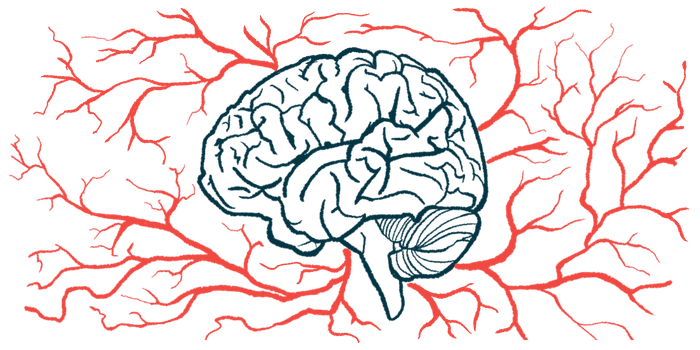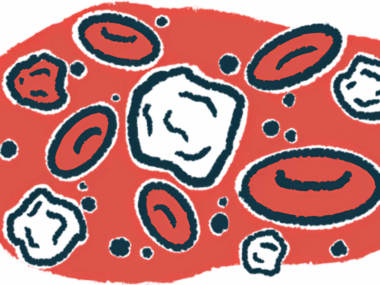Study shows mechanisms that help immune cells get into brain in MS
2 proteins found to break down barrier that protects brain
Written by |

Researchers have shed new light on the molecular mechanisms that help immune cells get into the brain to drive inflammation in multiple sclerosis (MS).
Two proteins called MMP-9 and MMP-2 were found to break down some components of the barrier that keeps immune cells out of the brain, helping these cells to instead reach the brain and drive MS-related inflammation.
According to the scientists, their study “provides new mechanistic insights into … events occurring … when barrier function is impaired.”
The study, “Secretomics reveals gelatinase substrates at the blood-brain barrier that are implicated in astroglial barrier function,” was published in Science Advances.
Investigating ways immune cells get into brain in MS
In MS, immune cells migrate into the brain and spinal cord and launch an inflammatory attack that damages nerve fibers. But to get into the nervous system, these inflammatory cells need to first pass through a cellular wall known as the blood-brain barrier, or BBB, which is designed to prevent such attacks.
This barrier is composed of two layers, an outer layer containing endothelial cells — the cells that line the inside of blood vessels — and a second inner layer containing astrocytes, which are star-shaped cells that help to support nerve function.
Immune cells need to pass through both layers of the BBB to get into the brain and cause MS-driving inflammation. Many studies have explored how immune cells can pass through the outer endothelial layer, but less is known about how they penetrate the inner layer of astrocytes.
“In contrast to leukocyte [immune cell] penetration of the endothelial barrier, there has been little knowledge of subsequent processes at the astroglial layer,” Lydia Sorokin, PhD, co-author of the study, conducted at the University of Münster, in Germany, said in a university press release.
Previous research has indicated that two proteins — specifically MMP-2 and MMP-9 — are needed for immune cells to cross the astrocyte layer of the BBB. Both of these proteins are gelatinases, or enzymes that are able to cut up other substances in the body.
Presumably, MMP-2 and MMP-9 cut certain molecules in the astrocyte layer of the BBB to allow immune cells entry. Exactly which molecules in the BBB are targeted by these proteins has not been clear, however.
“Evidence suggests that MMP-2 and MMP-9 have both positive and negative effects on the BBB. Therefore, deciphering their substrate specificity at the brain parenchymal boundary will contribute to the understanding of molecular processes essential for astroglial barrier function,” Sorokin said.
To learn more, Sorokin and her colleagues conducted a battery of experiments using astrocytes engineered to lack MMP-2, MMP-9, or both proteins. The team used a technique called secretomics to look for chopped up pieces of molecules present in unmodified astrocytes, and tested whether these pieces were present when the enzymes were missing.
“Our approach detects extracellularly released protein fragments independently of biochemical enrichments and is therefore particularly sensitive,” said Felix Meissner, PhD, study co-author at Bonn University Hospital.
Study IDs 140 molecules that can be cut by MMP-9 or MMP-2 proteins
Through their experiments, the researchers identified 119 molecules that can be cut by MMP-9 and 21 that can be cut by MMP-2; several of these molecules could be cut by both enzymes.
“We provide here a unique database of molecules that represent previously unknown potential gelatinase substrates [targets] that are likely to contribute to the barrier function of the astroglial border,” the researchers wrote.
One of the molecules found to be cut by MMP-9 is VCAM-1, a protein that’s previously been suggested to be involved in immune cells entering the brain in MS. In fact, the approved MS treatment Tysabri (natalizumab) works to prevent immune cells from getting into the brain by blocking the activity of this protein.
VCAM-1 is normally attached to the surface of BBB cells, and results showed that MMP-9 can clip the protein off of the cell surface.
After cell experiments identified VCAM-1 as a target of MMP-9, the researchers conducted tests in a mouse model of MS to see whether this also could occur in living animals. Consistent with the cell studies, VCAM-1 was absent from the BBB in places where immune cells had entered the brain in healthy mice. Meanwhile, in mice engineered to lack MMP-9, the protein was still attached.
In further experiments, the researchers determined that, when immune cells interact with VCAM-1 that is attached to BBB cells, the immune cells become less inflammatory. By contrast, when immune cells interacted with free-floating VCAM-1 that’s been snipped off the cell surface, the anti-inflammatory effects were lost.
Additional tests done using brain samples from people with or without MS showed that free-floating VCAM-1 was present in areas of the brain with higher MMP-9 activity in MS patients, further supporting the idea that these processes play a role in driving MS in people with the disease.
The researchers stressed that further studies will be needed to determine exactly how MMP-9 and MMP-2 become activated to allow immune cells to enter the brain in MS, noting that better understanding these processes may open up new avenues to treating the disease.






